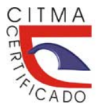Effect of mixed substrate on Limonium sinuatum L. Mill. seedlings, in the seedling phase
DOI:
https://doi.org/10.5281/zenodo.13916705Keywords:
crop, dry mass, Eichhornia, PistiaAbstract
Introduction: Limonium sinuatum (L.) Mill. does not appear in the book of Vascular Plants of Cuba, although it is grown by farmers as an ornamental plant, mainly due to the variety of colors in its flowers. Objective: to identify an appropriate mixed substrate, based on invasive aquatic plants, for L. sinuatum, in its first 28 days of crop. Method: 150 alveoli were prepared, 30 with Typical Red Ferralitic Soil (control) and the rest with substrate mixed with soil and dry mass of Pistia stratiotes L. (0.5 and 1.0 %) and Eichhornia crassipes (Mart.) Solms (2.0 and 4.0 %). After 28 days of culture, 30 experimental units per treatment were selected and their morphological characteristics were analyzed. Results: the emergence percentage was higher (45 %) in the experimental units where substrate mixed with E. crassipes was applied. Greater fresh (7.7 g) and dry (0.65 g) mass was obtained with P. stratiotes (1.0 %). The average number of leaves was greater where substrate mixed with E. crassipes (2.0%) was used, and the average length and width of the leaves was greater where substrate mixed with P. stratiotes (1.0 %) was used. Conclusion: the experimental units of L. sinuatum, grown with Typical Red Ferralitic Soil and dry mass of P. stratiotes at 1.0 %, as a mixed substrate, presented more relevant morphological characteristics than the rest of the experimental units. This is considered the most feasible treatment in the seedling phase. It is necessary to apply these substrates until the reproductive phase of L. sinuatum.
Downloads
References
Gancedo, N. C., Isolani, R., de Oliveira, N. C., Nakamura, C.V., de Medeiros Araújo, D. C.,
Sanches, A. C. C., Tonin, F.S., Fernandez Llimos, F., Chierrito, D. y de Mello, J. C. P. (2023). Chemical Constituents, Anticancer and Anti-Proliferative Potential of Limonium Species: A Systematic Review. Pharmaceuticals, 16, 293.
González Domínguez, J., León, M.E. de, Machado, I., Pineda, E. B. y Viñas Quintero, Y. (2019). Respuesta de caña de azúcar a la aplicación de fertilizantes minerales en Ciego de Ávila. Revista Ingeniería Agrícola. 9(3), 16-22.
González Orenga, S., Grigore, M. N., Boscaiu, M. y Vicente, O. (2021). Constitutive and induced salt tolerance mechanisms and potential uses of Limonium Mill. species. Agronomy 11(3), 413: https://doi.org/10.3390/agronomy11030413
Greuter, W. y Rankin, R. (2022). Plantas Vasculares de Cuba Inventario. Berlin, Germany: Botanischer Garten und Botanisches Museum Berlin. 679 pp.
Hernández Fernández, L. (2024). Plantas acuáticas invasoras: alternativas para la agricultura urbana, familiar y comunitaria en el cultivo Capsicum annuum L. [Tesis de Doctorado, Universidad de Ciego de Ávila, Cuba]. 159 pp.
Hernández Fernández, L., Méndez, I. E., Gerardo Vázquez, J., González de Zayas, R. y
Lorenzo Feijoo, J. C. (2023). Aquatic plants in the freshwater artificial lagoons in Ciego de Ávila, Cuba. Intropica, 18(1), 37-49. https://doi.og/10.21676/23897864.4753.
Lledó, M. D., Karis, P. O., Crespo, M. B., Fay, M. F., Chase, M. W. (2011). Endemism and evolution in Macaronesian and Mediterranean Limonium taxa. En: Bramwell, D., y Caujapé-Castells, J. (eds). The Biology of Island Floras. Cambridge University Press: 325-337. https://doi.org/10.1017/CBO9780511844270.014
Oksanen, J., Kindt, R. y O’Hara, B. (2005). Community ecology package. Community ecology package. The vegan Package, version 1.6-10, 88 pp. http://sortie-admin.readyhosting.com/lme/R%20Packages/vegan.pdf
Oviedo de Blas, I. O. (1992). Morfología de Limonium sinuatum (L.) Miller (Plumbaginaceae). Revista de Biología Tropical. 40(1), 11-17. https://revistas.ucr.ac.cr/index.php/rbt/article/view/24454
Pina Martins, F., Caperta, A. D., Conceicao, S. I., Nunes, V. L., Marques, I. y Paulo, O. S. (2023). A first look at sea-lavenders genomics–can genome wide SNP information tip the scales of controversy in the Limonium vulgare species complex? BMC plant biology, 23(1), 23-34.
Tang, Q., Cotton, A., Wei, Z., Xia, Y., Daniell, T. y Yan, X. (2022). How does partial substitution of chemical fertiliser with organic forms increase sustainability of agricultural production? Science of the Total Environment, 803(149), 149933. https://doi.org/10.1016/j.scitotenv.2021.149933
Xu, X., Zhou, Y., Mi, P., Wang, B. y Yuan, F. (2021). Salt-tolerance screening in Limonium sinuatum varieties with different flower colors. Scientific reports, 11(1), 14562.
Yuan, F. y Wang, B. (2020). Adaptation of recretohalophytes to salinity. En: Grigore, M. N. (ed). Handbook of Halophytes. Springer, Cham. https://doi.org/10.1007/978-3-030-17854-3_32-1
Downloads
Published
How to Cite
Issue
Section
License
Copyright (c) 2024 Universidad & ciencia

This work is licensed under a Creative Commons Attribution-NonCommercial-ShareAlike 4.0 International License.





















